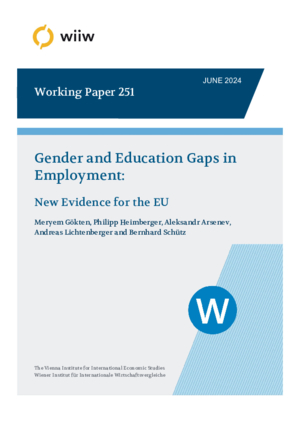Gender and Education Gaps in Employment: New Evidence for the EU
Aleksandr Arsenev, Meryem Gökten, Philipp Heimberger, Andreas Lichtenberger and Bernhard Schütz
wiiw Working Paper No. 251, June 2024
45 pages including 12 Tables and 16 Figures
This paper analyses (age-adjusted) employment rates by gender and education. We find that male female gender gaps and high-low education gaps in employment vary markedly across European Union (EU) countries and regions, with larger gaps existing in Eastern and Southern Europe than in Nordic and Continental EU countries. We estimate that closing existing education gaps in employment between high and lower education levels would raise the employment rate in the EU for the year 2022 by 10.6 percentage points, whereas closing the gender gaps between men and women would lead to an increase of 2.5 percentage points. At the same time, closing both the gender and education gaps would raise the EU employment rate from 76% to 89% of the population. Furthermore, we provide new evidence on the cyclical behaviour of employment gaps, finding that gender gaps are procyclical. While female employment rates tend to be more resilient than male employment rates during economic downturns, male employment rates tend to grow at a faster pace than female employment rates during upswings. In contrast, education gaps are more countercyclical, as employment risks are more strongly concentrated where education is low.
Keywords: Full employment, unemployment, employment gaps, gender, education, EU, business cycle
JEL classification: E24, E32, E6, J63, J64
Countries covered: European Union
Research Areas: Macroeconomic Analysis and Policy, Labour, Migration and Income Distribution
